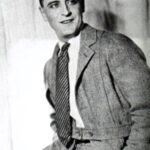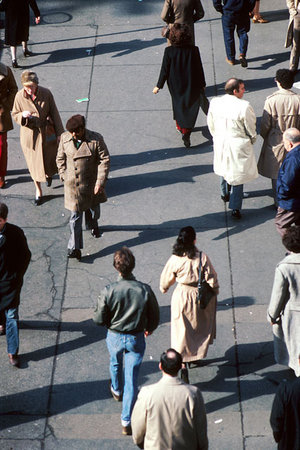The rise of Modernism occurred at the outset of the twentieth century, a time of great upheaval, not only in the arts, but in nearly every aspect of life. The expansion of scientific understanding and revolutionary growth in technology, coupled with incredible economic progress, provided a breeding ground for progressive thought. A new way of thinking absorbed American culture in literature, visual art, music, film, and virtually every form of artistic expression. No work exhibits the great upheaval that is Modernism more than F. Scott Fitzgerald’s The Great Gatsby. Published in 1925 and taking place in the summer of 1922, Fitzgerald’s work captures the electricity of the “Jazz Age.” In its imagined landscape, embrace of Modernist themes, and portrayal of American values, The Great Gatsby presents itself as one of the first truly Modernist novels to tap the bloodline of this new America.
The story of Jay Gatsby is told from the perspective of Nick Carraway, a newly arrived New York transplant from Minnesota. Nick rents a house in Long Island’s West Egg district, next door to the mysterious, newly-wealthy Gatsby. Nick spends his time with his East Egg residing cousin and her husband, Daisy and Tom Buchanan, who introduce him to the beautiful Jordan Baker, whom he develops a romantic relationship with. Nick comes to learn that Tom is having an affair with Myrtle Wilson, a married woman from an industrial town outside of West Egg known as the Valley of Ashes. As the summer wears on, Nick and Jordan are invited to Gatsby’s home for a party, one of many lavish get-togethers that Gatsby has become infamous for. Gatsby reveals to Jordan that he is in love with Daisy, whom he knew from his old life in Louisville. He describes the many nights he has spent staring across the bay from his East Egg mansion at the green light that emanates from the end of Daisy’s dock.
With his depiction of East and West Egg, Fitzgerald creates a setting that is more imaginary than factual. He dashes his description of setting with elements of metaphor, creating an altogether new fantasy world, more dependent upon the way it is seen by his characters than on geographical accuracy. He writes, “Twenty miles from [New York City] a pair of enormous eggs, identical in contour and separated only by a courtesy bay, juts out into the most domesticated body of salt water in the Western Hemisphere, the great wet barnyard of Long Island Sound,” (Fitzgerald, 9). Fitzgerald’s impressionistic depictions of landscape extends to the Valley of Ashes, which is described as a “fantastic farm where ashes grow like wheat into ridges and hills and grotesque gardens, where ashes take the forms of houses and chimneys and rising smoke and… men,” (Fitzgerald, 27) By employing this semi-imagined setting, Fitzgerald creates a world where the old rules no longer apply. Furthermore, Fitzgerald’s setting is dependant upon modern conventions. Roads, automobiles, newly-built mansions, and billboard advertising play an integral part in Fitzgerald’s setting and the development of his narrative.
The eyes of Doctor T. J. Eckleburg serve as a perfect example of the modernity integrated into Gatsby’s setting and its themes. The faded eyes behind a pair of glasses are painted on a billboard in the Valley of Ashes and are perceived by the husband of Myrtle Wilson, Tom’s adulterous lover, as the eyes of God. The symbol of God’s presence behind the unblinking eyes of Doctor T. J. Eckleburg exists only in the grief-stricken George Wilson’s mind. The lack of any corroboration or explanation by Fitzgerald contributes to the uncertainty of the image. As a result, the eyes come to be more of a symbol of the meaningless of the way of life of 1920s socialites. Whether it be a result of the narrator Nick Carraway’s view of the setting or that of Fitzgerald himself, the society of West and East Egg is presented as being a cover for the emptiness of its inhabitants’ lives.
Fitzgerald attempts to portray the lives of the established wealthy of East Egg as essentially hollow. Late in the novel, a drunken Daisy accidently kills Myrtle Wilson, her husband’s lover, in a car accident. An unknowing George Wilson blames Myrtle’s death on Gatsby, whom he has also misguidedly determined to be his wife’s lover. George goes to Gatsby’s home and shoots him as he floats on an air mattress in his pool. George then shoots himself. Now, directly and inadvertently responsible for the deaths of three different people, Tom and Daisy Buchanan leave town. Nick Carraway recounts a run-in with Tom years later, in which Tom seems to display no remorse for his or his wife’s actions. From the outset, Fitzgerald characterizes both Tom and Daisy as symbols of old wealth. The East Egg residing couple both come from aristocratic backgrounds, and, in Gatsby’s eyes, Daisy represents the sophistication and grace of the old aristocracy, but Nick’s views of the couple are more in line with those of Fitzgerald. “They were careless people, Tom and Daisy — they smashed up things and creatures and then retreated back into their money… and let other people clean up the mess they had made,” (Fitzgerald, 170). Their is no heart in the aristocratic East Egg. The stance Fitzgerald takes toward his aristocratic symbols of the past exemplifies Modernist thinking. Fitzgerald condemns this old society, embraced by Fitzgerald’s Victorian literary predecessors. The portrayed hollowness of upper class existence in East Egg is characteristic of Modernist themes and ways of thought.
The Great Gatsby is possibly most modern for its critique of the American dream. Gatsby’s dream is to love Daisy, but his goal is obstructed by their conflicting social statuses. The green light at the end of Daisy’s dock serves as a classic symbol of the American dream. Gatsby views the light, located across the bay in the aristocratic East Egg, from his home in West Egg. The light is “minute and faraway,” (Fitzgerald, 22) like the dream Gatsby pursues. Gatsby could never see the impossibility of his dream, as Nick describes it after his death. “I thought of Gatsby’s wonder when he first picked out Daisy’s light at the end of his dock. He had come such a long way… and his dream must have seemed so close he could hardly fail to grasp it. But what he did not know was that it was already behind him, somewhere in the vast obscurity… where the dark fields of the republic rolled on under the night,” (Fitzgerald, 182) Fitzgerald draws a comparison between the failure of Gatsby’s dream and the disintegration of the American dream in the 1920s. The idealization Gatsby bestows upon Daisy is undeserved, as is the desire designated to material wealth and pleasure by 1920s culture. Fitzgerald’s narrator Nick becomes so disillusioned with East Coast society and values, he moves back to Minnesota after Gatsby’s death. East Egg was “distorted beyond [his] eye’s power of correction,” (Fitzgerald, 167).
The Great Gatsby exists as a distinctly Modernist novel, as defined by its imagined landscape, portrayal of the American dream, and embrace of Modernist themes. The story Fitzgerald crafts is heavily reliant on its modern setting, so much so that it could not have been written at an earlier time. Fitzgerald embraces the ’20s’ economy and culture, creating characters that are not only reliant on it, but essentially products of it. Gatsby exhibits many of the most common themes of modernist works: distant migration from a rural area to a city; ambiguity in the development of its characters and their motivations; prevalence of modern symbols, the automobile, billboard advertising, etc. Furthermore, Fitzgerald’s characters seem to have emerged from the modernist notion of reinvention. “The truth was that Jay Gatsby… sprang from his Platonic conception of himself” (Fitzgerald, 95). Fitzgerald’s character managed to reinvent himself into his own vision, a uniquely modernist concept.



